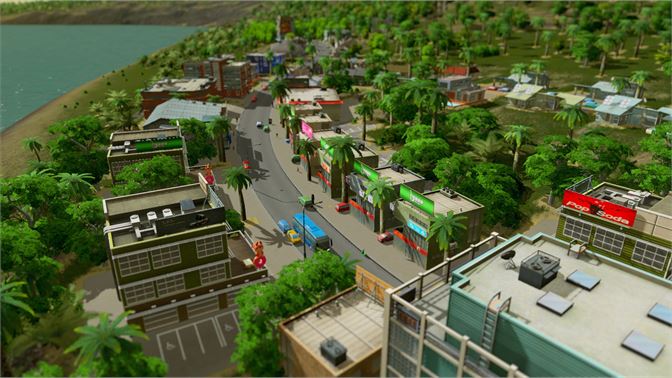
You’ll want to plot out several turns in a row to figure out configurations that will trigger each card’s kicker ability. The key to success is figuring out the best way to cram as much of them on the board as possible. While services and utilities take the form of rectangles that increase in size based on how effective they are, other structures are mostly asymmetrical. Utility buildings are the ultimate Not In My Backyard structures in that they provide vital resources like electricity and water but don’t give any specific benefits to nearby tiles. Services can add happiness or reduce negative effects like pollution but cost money to build. These cards rarely do anything good on their own and must be placed next to or in the same district as specific other structures like healthcare providers or parks to trigger kickers that will produce money and happiness. They also bring unemployed people to the city who can then be put to work in industrial or commercial zones, which in turn tax the city by increasing crime, traffic or pollution. Residential zones stress the city’s resources by requiring electricity, water or garbage collection. Players take turns playing construction cards, each with its own drawbacks. Players are working together to build the city. While the video game’s buildings sprouted from their designated districts like concrete weeds, board game players must meticulously find the best places for awkwardly-shaped pieces of cardboard to fit together like a slow-motion game of Tetris.
CITY SKYLINES PC GAME SERIES
Rather than having players place roads and form districts, they’re preset areas on a series of maps that vary based on scenario.
CITY SKYLINES PC GAME PC
It’s a game that strongly rewards planning, asking players to consider not just what actions work on a given turn but how they will affect many turns to come.Ĭities: Skylines - The Board Game channels the spirit of the PC game it’s based on without trying to slavishly replicate the mechanics.

Even parts of beautiful Chicago are plagued by violent crime.Īll of these ambitions and problems are woven into Rustan Håkansson’s Cities: Skylines, a co-op board game that puts one to four players in charge of growing and sustaining a city. Burning coal degraded London’s air quality to lethal levels until policies were passed to reduce the pollution. Venice’s waters have been essential for its economy, but now they threaten to drown it entirely. But for every city building success story there are even more failures. The Burnham Plan of Chicago was a landmark in city building that turned the devastation wrought by the Great Chicago Fire into an opportunity for urban renewal that produced a metropolis defined by wide streets, bountiful green space and dramatic gothic architecture.


 0 kommentar(er)
0 kommentar(er)
